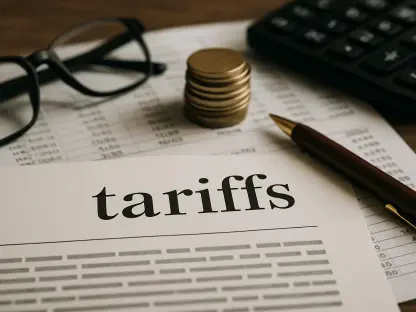As the world navigates through fluctuating economic landscapes, a significant development has captured the attention of investors and analysts alike—the global stock market rally. This upward trajectory is emblematic not only in American and European equities but also across major financial zones worldwide. Recent robust U.S. retail sales in June have played a pivotal role, alleviating concerns regarding the health of the American economy. This has led to modest gains in major U.S. indices like the S&P 500 and NASDAQ 100 futures, following record-high closures. The ripple effect of this optimism has spurred similar growth in European and Asian markets, with European futures and Asian stocks each witnessing a 0.4% rise.
Momentum in U.S. and European Markets
Developments in Key U.S. Indices
Recent economic indicators point towards an improvement in the U.S. economy, sparking investor interest and leading to an upward trend in stock indices. The rally in the American market is significantly driven by positive retail sales, with consumer spending showcasing resilience amid economic uncertainties. Major indices, including the S&P 500 and NASDAQ 100, have risen due to these factors. Another contributing element has been legislative movements, such as the U.S. Congress’s regulation of stablecoins, which energized the cryptocurrency market, contributing to its recent climbs. The environment in these financial markets indicates sustained economic optimism, where favorable data on employment and retail activity underpins the sentiment driving stock prices upward.
European Stock Market Dynamics
European markets are similarly benefiting from positive internal economic developments that foster growth. An encouraging start for European stocks is mirrored in indices like the EURO STOXX 50 and DAX, which have shown incremental increases. This positive trajectory is largely attributed to successful first-quarter sales reports from companies such as Burberry, alongside optimistic forecasts by Saab, a military-industrial company. The vibrant atmosphere, fueled by improved corporate performances, marks a hopeful outlook for investors. However, corporate setbacks like GlaxoSmithKline’s struggle following an FDA committee rejection serve as reminders of the sporadic nature of such progress. The divergence in performances across sectors reflects the complex balance of growth and challenges within European equities.
Global Economic Indicators and Investor Sentiment
Influence of Economic Data on Market Confidence
Economic indicators have forged a general sense of optimism among investors, prompting renewed interest in the stock market. Trends such as declining unemployment claims have catalyzed confidence, setting the stage for an anticipatory outlook toward forthcoming second-quarter earnings reports. Analysts assert that economic expansion paired with low unemployment rates creates a robust consumption scenario beneficial for stock prices. The discourse within financial circles often centers around interest rate adjustments, with varied opinions on their necessity according to existing labor market conditions. These discussions within the Federal Reserve underline the diverse management approaches aimed at fostering economic stability.
Uncertainties in Monetary Policy
While there is a consensus on a generally positive economic environment, uncertainties persist, particularly around monetary policies. Insights into Federal Reserve strategies reveal conflicting views on interest rate modifications, sparking discussions among economists and investors. Advocates for steady rates amid inflation concerns counter suggestions for rate reductions aimed at boosting employment. Such debates reflect dollar weakness linked to anticipated interest rate cuts, occasionally counterbalanced by factions within the Fed advocating for stabilization measures. As U.S. Treasury yields exhibit declines in tandem with currency trends, these movements encapsulate the broader complexities of the current financial landscape.
Navigating the Path Forward
As the global economy navigates through volatile conditions, a noteworthy trend has emerged, drawing the focus of investors and analysts around the world: a rally in the global stock market. This upward movement is not limited to American or European equities but extends across key financial hubs globally. A recent highlight has been the stronger-than-expected U.S. retail sales in June, which have been instrumental in easing worries about the vitality of the American economy. This has resulted in modest, yet significant, advances in major U.S. indices such as the S&P 500 and NASDAQ 100 futures, following their record-high closures. The resulting wave of optimism has not been contained within the U.S. borders—European and Asian markets have mirrored this sentiment, with each seeing a 0.4% rise in European futures and Asian stocks. This interconnected growth underscores the global nature of financial markets, where positive news in one region can quickly lead to widespread confidence and growth in others.









